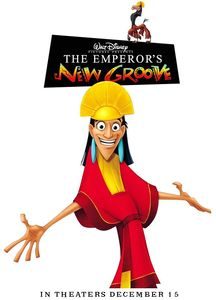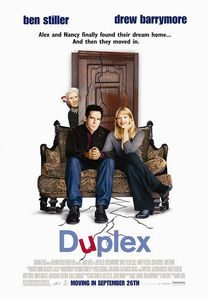The Emperor’s New Groove (2000)
(In French, On Blu-Ray, July 2015) At the time of The Emperor’s New Groove, Disney animated movies had an undeserved reputation for formal stuffiness, their quasi-mythic grandeur either being absent of comedy (Pocahontas), sweeping it aside (The Lion King) or being undermined by it (Mulan). The overtly-comic Hercules is an important exception, but it too often struggled to present a solid dramatic framework as backup for its pop-culture gags. So it is that The Emperor’s New Groove comes (still) as a refreshing change of pace, taking on a post-modern comic sensibility and minimizing the drama to its structural essence. The sense of humor shown by the film is far hipper than most of its contemporaries, with a fast-talking narrator/protagonist and a slapstick narrative that feels far removed from the staid Disney brand. It may not aspire to much more than a modest commercial success (reading about the film’s troubled origins clearly shows that its conception was of a hail-Mary move to recoup a huge investment in a failed project.) that won’t have the same staying power as most other Disney animated films, but The Emperor’s New Groove is still quite enjoyable fifteen years later and doesn’t seem to have aged a single second even at a time when most animated films are computer-generated. I’ll note that the French version included on the Canadian Blu-Ray version has two recognizable voice actors, and features quebecisms (including accented turns of phrase) far more often than other translated Disney films.













![Batoru rowaiaru [Battle Royale] (2000)](https://www.christian-sauve.com/wp-content/uploads//batoru-rowiaru-2000-200x300.jpg)
